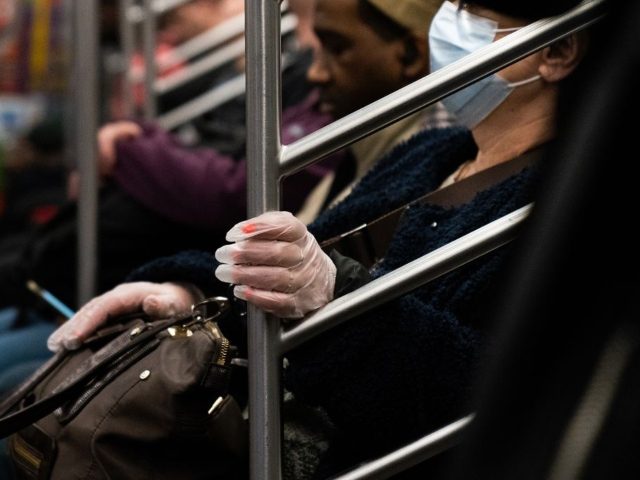A National Bureau of Economic Research (NBER) working paper by MIT Professor Jeffrey E. Harris concludes that the New York City subway system “seeded the massive coronavirus epidemic” in the city.
Even more significantly, the Metropolitan Transit Authority’s (MTA) decision to reduce subway service exacerbated the problem because the more crowded subway cars “most likely accelerated the spread of coronavirus.”
Metropolitan New York City remains the epicenter of the coronavirus pandemic in the United States. More than half of the more than 40,000 coronvirus deaths in the United States as of April 19 have taken place in two states: New York and New Jersey. The bulk of the deaths in those states have been in the Metropolitan New York City area, which is not only the most densely populated region of the country, it also has by far the heaviest daily usage of mass transit, particularly subways.
“New York City’s multitentacled subway system was a major disseminator – if not the principal transmission vehicle – of coronavirus infection during the initial takeoff of the massive epidemic that became evident throughout the city during March 2020,” Harris, who has a Ph.D. in Economics and an M.D. and is both a practicing physician and a professor of economics at MIT, wrote in the abstract of the NBER working paper published on April 13:
The near shutoff of subway ridership in Manhattan – down by over 90 percent at the end of March – correlates strongly with the substantial increase in the doubling time of new cases in this borough. Maps of subway station turnstile entries, superimposed upon zip code-level maps of reported coronavirus incidence, are strongly consistent with subway-facilitated disease propagation. Local train lines appear to have a higher propensity to transmit infection than express lines. Reciprocal seeding of infection appears to be the best explanation for the emergence of a single hotspot in Midtown West in Manhattan. (emphasis added)
According to the working paper:
The Metropolitan Transit Authority’s decision to cut back its train service to accommodate the reduced demand may have indeed helped to shore up the agency’s financial position, but it most likely accelerated the spread of coronavirus throughout the city. That’s because the resulting reduction in train service tended to maintain passenger density, the key factor driving viral propagation (Goldbaum and Cook 2020).
How ironic it is that, from the public health perspective, the optimal policy would have been to double – maybe even triple – the frequency of train service. The agency’s decision to convert multiple express lines into local service only enhanced the risk of contagion (Goldbaum 2020). How ironic it is that the preferred policy would have been to run even more express lines. We have not seen any public data on the incremental cost of the agency’s decision to begin to disinfect subway cars twice daily. Still, it is natural to inquire why the cars weren’t disinfected every time they emptied out of passengers at both ends of the line.
Harris wrote that workers in the Metropolitan Transit Authority (MTA) have experienced “a significant number of coronavirus deaths and infections.”
On April 10, for instance Harris notes that The New York Post reported “50 MTA workers now dead from coronavirus.”
“Tragically, the counts of infected and fallen workers have continued to grow,” Harris continued:
By April 16, the MTA had reported 68 deaths among more than 2,400 subway and bus employees who had tested positive. “Another 4,400 are on home quarantine and thousands more are calling out sick.” (Metropolitan Transportation Authority (MTA) 2020a)
Data from TWU Local 100 indicate that the agency has 40,000 front-line transit workers (TWU Local 100 2019). That would imply a cumulative incidence of infection equal to 600 per 10,000, more than three times the rate of 180 per 10,000 reported in East Elmhurst (zip code 11370), the most affected hotspot in Figures 4 and 5 above. While the MTA announced on April 15 that it would begin its own testing of symptomatic employees, the agency’s workers had previously been directed to find tests on their own accord. “Nor has [the agency] offered any theories as to why the transit division’s workforce is suffering such losses.” (Rubinstein 2020)
It is hard to imagine any plausible explanation for these workers’ losses except that their place of work was the principal source of their coronavirus infections. How ironic it is that unfathomable tragedy of these frontline workers turns out to be the clincher that transports us from correlation to causation.
The findings in the NBER working paper by Professor Harris suggest Metropolitan New York City will require unique social distancing policies that focus on limiting the transmission of coronavirus in mass transit as the area begins to reopen.

COMMENTS
Please let us know if you're having issues with commenting.